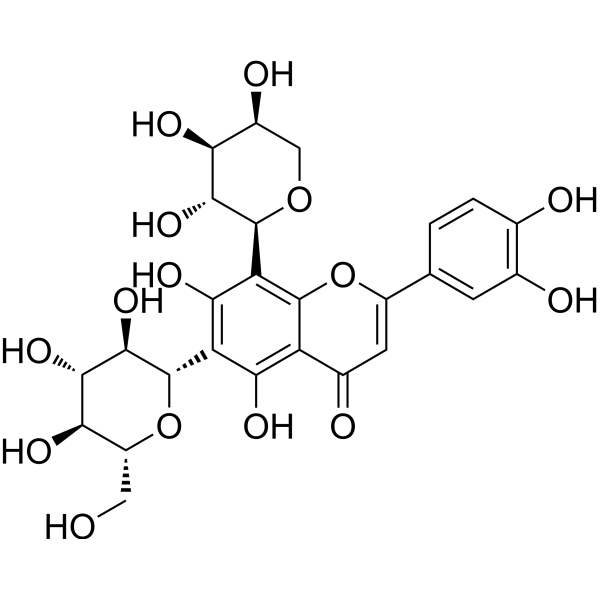
Carlinoside
CAS No. 59952-97-5
Carlinoside( —— )
Catalog No. M31392 CAS No. 59952-97-5
Carlinoside could be a worthy choice to intervene hyperbilirubinemia due to liver dysfunction. Carlinoside upregulates Nrf2 gene expression, increases its nuclear translocation and stimulates UGT1A1 promoter activity.
Purity : >98% (HPLC)
 COA
COA
 Datasheet
Datasheet
 HNMR
HNMR
 HPLC
HPLC
 MSDS
MSDS
 Handing Instructions
Handing Instructions
| Size | Price / USD | Stock | Quantity |
| 5MG | 1503 | In Stock |


|
| 50MG | Get Quote | In Stock |


|
| 100MG | Get Quote | In Stock |


|
Biological Information
-
Product NameCarlinoside
-
NoteResearch use only, not for human use.
-
Brief DescriptionCarlinoside could be a worthy choice to intervene hyperbilirubinemia due to liver dysfunction. Carlinoside upregulates Nrf2 gene expression, increases its nuclear translocation and stimulates UGT1A1 promoter activity.
-
DescriptionCarlinoside could be a worthy choice to intervene hyperbilirubinemia due to liver dysfunction. Carlinoside upregulates Nrf2 gene expression, increases its nuclear translocation and stimulates UGT1A1 promoter activity.
-
In Vitro——
-
In Vivo——
-
Synonyms——
-
PathwayOthers
-
TargetOther Targets
-
Recptor——
-
Research Area——
-
Indication——
Chemical Information
-
CAS Number59952-97-5
-
Formula Weight580.5
-
Molecular FormulaC26H28O15
-
Purity>98% (HPLC)
-
Solubility——
-
SMILES——
-
Chemical Name——
Shipping & Storage Information
-
Storage(-20℃)
-
ShippingWith Ice Pack
-
Stability≥ 2 years
Reference
molnova catalog



related products
-
Murrayone
Murrayone, a coumarin-containing compound extracted from M. paniculata, is the most bioactive substance in this species and is a cancer metastasis chemopreventive agent based on its unique pharmacological properties.
-
PF-543
PF-543, a novel sphingosine-competitive inhibitor of SphK1, inhibits SphK1 with IC50 and Ki of 2.0 nM and 3.6 nM.
-
TC-AQP1-1
TC-AQP1-1 is a blocker of the aquaporin 1 channel identified by virtual screening and inhibits water flux through hAQP1 in Xenopus laevis oocyte swelling assays at low micromolar concentrations.



 Cart
Cart
 sales@molnova.com
sales@molnova.com


